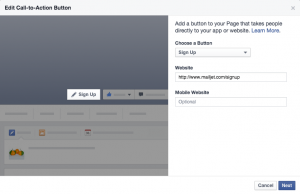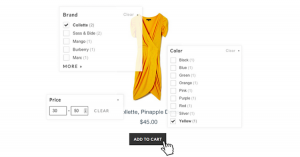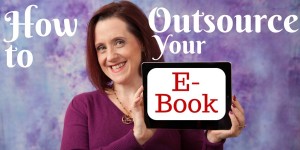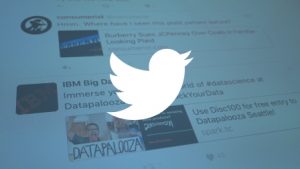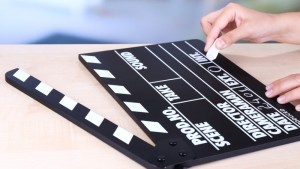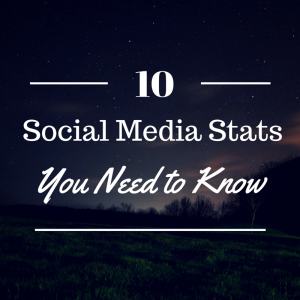Things move quick on Twitter.
The shelf life of a single tweet is four times shorter than stuff on Facebook.

That ephemeral nature makes it difficult for messages to stick and get anyone to do anything (to, you know, make your investment in Twitter ads worth it).
What’s worse, is that employing the same direct-response strategies from AdWords on Twitter is a recipe for disaster. Twitter is a different beast entirely, running on caffeine and rooted in serendipity. So your Twitter ad campaigns need to adjust accordingly.
Study these 30 awesome Twitter ad examples (and actionable tips you can copy) before spending anything to set yourself up for success from the get-go.
1. InSinkErator

We’ve established how hard it is to get attention to your tweet. But high engagement can help stretch that attention out, involving your followers to give them a reason to hold on for more.
Contests are a great way to drive engagement since there’s something in it for the end user. InSinkErator’s contest is a good example because it focuses the message on what their products do or allow.
Combining promotional methods is also a smart idea – ad-promoted contests get 10x the entries.
2. Visit Santa Clara

Sure, the image in this Twitter ad isn’t the most attractive. And who runs on a hosted WordPress site these days?!
However, the real value here isn’t the ad necessarily, but the intent behind what you’re seeing.
Visit Santa Clara is doing a great job capitalizing on the (a) timing and (b) location of Twitter users with relevant content. Twitter is also destination #1 for live events. Especially big ones like the Super Bowl.
So they’re positioning their ad in front of a growing trend which will explode with activity – note the use of the hashtag to increase exposure.
3. Cancer Research UK

Nobody likes cancer (duh). But is that dislike, in and of itself, motivating enough to actually do or share something? Sadly, probably not.
You know what is? A person you know or care about who’s suffering from cancer.
Cancer Research UK brilliantly taps into that side of the equation, steering clear of daunting facts and figures in favor of exposing the human element. This ad is complete with a real picture of actual people – NOT stock photography – to get you (the viewer) to imagine yourself or someone you know in their shoes.
This human element is key if you’re doing marketing for a nonprofit.
4. Jack Daniel’s AU

I am familiar with this Jack. And here, Jack is taking time out from his busy schedule to sit down and bond. Bonding is what makes the theme of this ad unique. Even the image looks like one drink is poured for him, while the other is almost within your reach.
It’s not the product then, but the occasion that’s important. We call this behavioral segmentation – crafting the ad to appeal to the type of people who would want to buy this product and how they’d use it.
5. DotMailer

Switching gears entirely, DotMailer does a few interesting things in this Twitter ad to get you to click.
First, the tweet copy concisely sums up the value proposition to grab your attention, while the brackets around ‘Best Practice Guide’ expertly focus your attention (while you’re scanning dozens of other tweets each minute).
Second, the image contains extra supporting stats to add credibility to their claim, along with a CTA button so you know exactly how to obtain this offer. This is a great template to follow if you’re in the business-to-business (B2B) space!
6. CuriosityStream

Not all great Twitter ads have to use an image. Case in point: CuriosityStream nails the text-based approach with a simple question that immediately positions their offering.
A text-only ad also might appeal to, you know, people who actually read! Which are undoubtedly in the same people who call sifting through 1,000 documentaries enjoyable.
Specificity in the number of documentaries increases credibility, as does the risk-reversing 30-day trial (which we’ll explore more later in number 24).
If your product isn’t particularly visual or if your audience is cerebral, try testing a text-only ad and see what happens.
7. Verge Transportation

In Free Prize Inside, Seth Godin explains a concept called ‘edgecraft’ to help companies or products stand out from the crowd by focusing on what puts them at the extremes. (Because, the theory goes, everything in the middle is too similar and too easily ignored.)
Verge Transportation does that by choosing a specific car to highlight that just so happens to look like a rocket ship and is the fastest on the planet.
Another thing that got my attention? What first looks like a typo (cat instead of car) upon closer inspection is a pun on Jaguar. Well-played.
8. XFINITY

This Twitter ad from XFINITY is another example that plays on timing by connecting the product (voice remote) to a trending event (the Oscars).
They keep relevancy intact by asking a related question, which highlights a perfect use case of the product – plus it creates curiosity, since users will want to know the answer to the trivia question. The image supports this moment, to complete a well-executed ad all around.
9. ToiletTree Products

With a name like ToiletTree Products, your mind races to figure out what on Earth they sell.
Fortunately, the ad cuts your inner chatter off with a simple content offering. It’s got one of those Buzzfeed-style listicle headlines, and the words ‘Easy’ and ‘DIY’ nail the shortcut angle that promises to simplify your chaotic life.
And I’ll admit: as an unsophisticated male, I have no idea what a hair mask is (or does). But I think I need one.
10. M.L. Spencer

Customer testimonials and reviews are cited as the primary motivator in just about any kind of purchase. That’s especially true with books, which people often buy based on (a) recommendations from friends or (b) great reviews on sites like Amazon or GoodReads.
Fantasy Author M.L. Spencer uses a simple reader’s quote as a form of testimonial. Then she pairs it with the perfect image + line of text that immediately translates the mood and premise of the novel in question to the user.
If you’re creating a Twitter ad for a product with great reviews, feature one in your ad!
11. Domain

In this Twitter ad example, Australian property group Domain uses a Pinterest-esque image that would immediately pique the interest of anyone scrolling through their social feed while driving (because watching the road is so 2009).
This little bubble tent inches away from the ocean employs pattern interruption to get you to pause and take notice, processing for a few seconds what the hell you’re looking at.
And in that amount of time, you’ve gone back to check the initial lead-in copy, look at who the ad’s from, and notice the link to help you answer the question burning at the back of your mind.
Anyone can copy this strategy by going for the unexpected in your ad creative.
12. GigRove

Relevancy in advertising is a key component that dictates success or failure – which means intimately understanding your audience should be your first priority.
GigRove illustrates that concept here. Freelancers love to travel. Or is it the other way around? That nomadic lifestyle makes it tough to hold a steady job in one place for too long, and online you see evidence of this with a huge, thriving community of passionate travelers who freelance to pay the bills.
You don’t need flashy headlines or provocative images when you’ve got relevancy figured out. Make sure you understand why your target audience needs or wants your offering.
13. Simply Measured

Simply Measured’s Twitter ad looks like a version of the B2B template we saw earlier with DotMailer:
- Content-based offering highlighting tips & trends
- Promises simplicity to overworked social marketers
- Relevant CTA with link
- Branded, high-quality image that reinforces offer and includes another CTA
14. WordStream

Call it a shameless plug, but this Twitter ad is executed extremely well. The ad’s offer and value prop promises that using a free tool will help you solve a problem or pain point in less than 60 seconds.
There’s a branded image that maintains consistency (although showing an example of the report or findings might be worth a try too).
The emoji’s keep it fun and playful for what might otherwise be a ‘boring’ offer (it is a social medium after all). They also help the ad to stand out and translate what you stand to gain from using the tool (actionable data and higher profits).
In addition, this ad includes an appropriate call to action in the tweet copy, including the key words ‘free report’ to re-emphasize why you should click.
BTW, have you used it? If not, you should. It’s awesome.
15. Larry Kim

Oh hey, look who it is!
Consider this your little half-time commercial break or something.
Again – a well-executed Twitter ad on all fronts. The headline is one of those timelines, unanswerable questions. The image contains one of the answers to said question, offering you a teaser as to what you’ll learn after clicking. It’s a great trick to get more text into the limited space available in a Twitter ad.
Also, emojis!
16. Twenty20

There’s a reason negative messaging often leads to more shares on popular blogs. It speaks to our primal lizard brains, urging us to quickly get to safety before something bad happens.
In copywriting, negative messaging usually manifests as pointing out mistakes you’re already making, or external threats you need to protect yourself from.
Twenty20 incorporates negative messaging with a huge pain point for marketers (embarrassing your brand with lame stock photos), and then relieves that pressure by providing a simple way to fix the problem.
17. Treasure Data, Inc.

Another very simple, straightforward approach from Treasure Data, Inc. that answers all the key questions prospects might have:
- Who is this for? CTOs, CIOs, Data Scientists, Engineers
- What is it? Free Gartner Research
- Why do you need it? 100 projections through 2020
- Where & When can you get it? Click the “Read More” CTA button now
Doesn’t get much more relevant than that!
18. Spredfast

What’s at the top of the most powerful copywriting words you can use to convert? New.
People crave novelty, so emphasizing it through highlighting what’s new (or in this case, just released) immediately puts you on alert.
The only thing that doesn’t jive? What’s with the ice cream cone?! Irrelevant images can actually work against you and hurt conversions if not careful.
(See what I did there? Negative messaging FTW!)
19. Thistle

People scan. Especially on social. Especially on mobile.
Therefore your content, in this context, needs to adjust accordingly. How?
Punchy phrases. Short sentences. Fragments. And verbs. (Just like in the ad above.)
20. Bombfell

Rule #1: Know your audience.
Let’s be honest: Men are slobs. Most probably wouldn’t shower, if it was socially acceptable.
But like a peacock unfurling his feathers to attract the attention of a mate, we need to dress well. Because women.
Bombfell plays on this script, using empathy to forge a common bond with their audience. And the image supports convenience, the primary value proposition behind their service. Your Twitter ads should also speak to that value prop for the target audience.
21. Indochino

Rule #2. Personalize your message to said audience.
SoLoMo (social + local + mobile) go together like PBnJ.
Social advertising options can provide a wealth of customer data advertisers can use to increase the effectiveness of their messages. Incorporating location into your ads is an easy, effective trick to immediately increase the relevancy of a message to your target market.
This Twitter ad from Indochino is a great example (not to mention the incentive of a deal, the cherry on top of an otherwise already good ad).
22. Zipcar

Zipcars help young, carless urbanites get around. ‘City living & weekends on the water’ pretty much sums that lifestyle up perfectly!
The hero image helps viewers transport themselves to the calm, serene, picturesque beach, while the CTA (with accompanying incentive) makes this fictional scene a potential reality with one simple click.
The takeaway? Use the image in your ad to sell prospects a fantasy they can attain by clicking.
23. Turkey.Home

Cross-promoting your own social accounts actually makes a lot of sense, as each channel gives you the ability to showcase different types of content. Each also offers their own posting schedules, thereby increasing your chances of someone seeing your message before it’s timeliness decays.
It’s advertising 101: Reach and Frequency.
Reach is the amount of unique people you’re reaching, while frequency is the number of times your messaging is being seen by the same person. You need both to move the needle, as it usually takes a minimum of 6-8 ‘touches’ before someone takes action.
Getting people to follow you on multiple networks means you’re that much more likely to reach them.
24. Showtime

A risk reversal does just what it sounds like. It provides the customer with a free taste, removing the barriers to entry which otherwise might prevent them from signing up in the first place.
Showtime does that twice here, once with the quick 30-second clip, and again with the free 30-day trial. They also zero in on two of their most noteworthy shows to make the message more impactful and enticing.
25. SPG

Nobody needs another credit card offer. Our mailboxes are already stuffed full of them.
Trying to sell the commodity will probably fall on deaf ears. But selling the outcome, like SPG does here, cuts through the noise. It’s not about the credit card, it’s about what the card can get you.
Outcome-based selling also makes your job on the creative MUCH easier, because a beautiful photo of a tropical locale like this can fit in perfectly on any social medium.
Unlike in AdWords, nobody is searching for your product here on Twitter. Go for product placement instead.
26. Turkey.Home

Speaking of product-placement, here’s Istanbul.
The perfect blend between old and new on the Mediterranean. The gateway between Europe and Asia.
When the offer or value prop is this good, you don’t have to be overly clever. Sometimes less is more.
27. Digital Marketer

Email deliverability is a big problem (and getting worse). Great subject lines are the most potent antidote.
Trouble is, coming up with great ones is challenging. They need to walk a fine line between concise and intriguing. Here, Digital Marketer promises to solve that pain for us.
And love ‘em or hate ‘em, listiclesremain among the most highly shared posts online. Exploit this stat in your Twitter ads, not just your content marketing. (And the higher the number, the better!)
28. Pantheon

Pantheon also wants to alleviate our pain, this time by disproving myths which might be setting you astray. These last two examples continue to showcase the power of negativity, helping unsuspecting victims avoid peril.
And as in the case of Larry Kim’s example in #15, they incorporate one of the myths in the image to provide a sample of what’s to come. This is a great way to draw users in and make them want more.
29. Influitive

Influitive’s Advocamp is a customer experience and engagement event. But they’re not the star of the show here. Jay Baer is.
Piggybacking on the strength of his brand not only exposes the company to a new audience, but it also creates the connection for extra affinity and adds credibility to their event.
Here, Jay himself expands on this tactic with why you need to market your marketing.
How’s that for meta?! Jay Baer from the past, explaining what Jay Baer is doing in the present. Mind. Blown.
30. CBRE

Most companies say they care about employees. CBRE puts their money where their mouth is here, and flips the script by using social ads for recruiting and brand awareness.
They’re also piggybacking, in a way, on the new-agey trend of filling your startup office with, well… all kinds of distractions and crap that surely make getting important, focused work accomplished impossible.
Aligning your message with a trend like that – whether you’re impartial, for or against – can help elevate it from the 2+ million other pieces of content going live each day.
Twitter Ads: They’re Worth It!
Twitter, by nature and design, is a firehose of nonstop, ephemeral information.
That overwhelming onslaught of competition for attention might seem daunting, but employing some of the tricks learned here can help your Twitter ads stand out from the crowd.
Companies from a wide variety of industries are using Twitter successfully to increase brand awareness, drive lead generation, and even support product sales in some cases.
However, they’re doing it by playing to the strengths of the medium. Not by force feeding their AdWords approach into a totally different platform, or shoehorning tactics that will never fit properly.
The good news is that social media – especially Twitter – hasn’t changed marketing.
Yes, the methods need to evolve with consumer behavior. But the classics, like strong ad copy supported by a compelling value proposition, captivating hero images, and clear calls to action, are as relevant today as they were 70 years ago for Ogilvy – and just as effective.
Are you advertising on Facebook?
Watch the video below to learn how to capture more leads and sales:
Digital & Social Articles on Business 2 Community
(154)
Report Post

